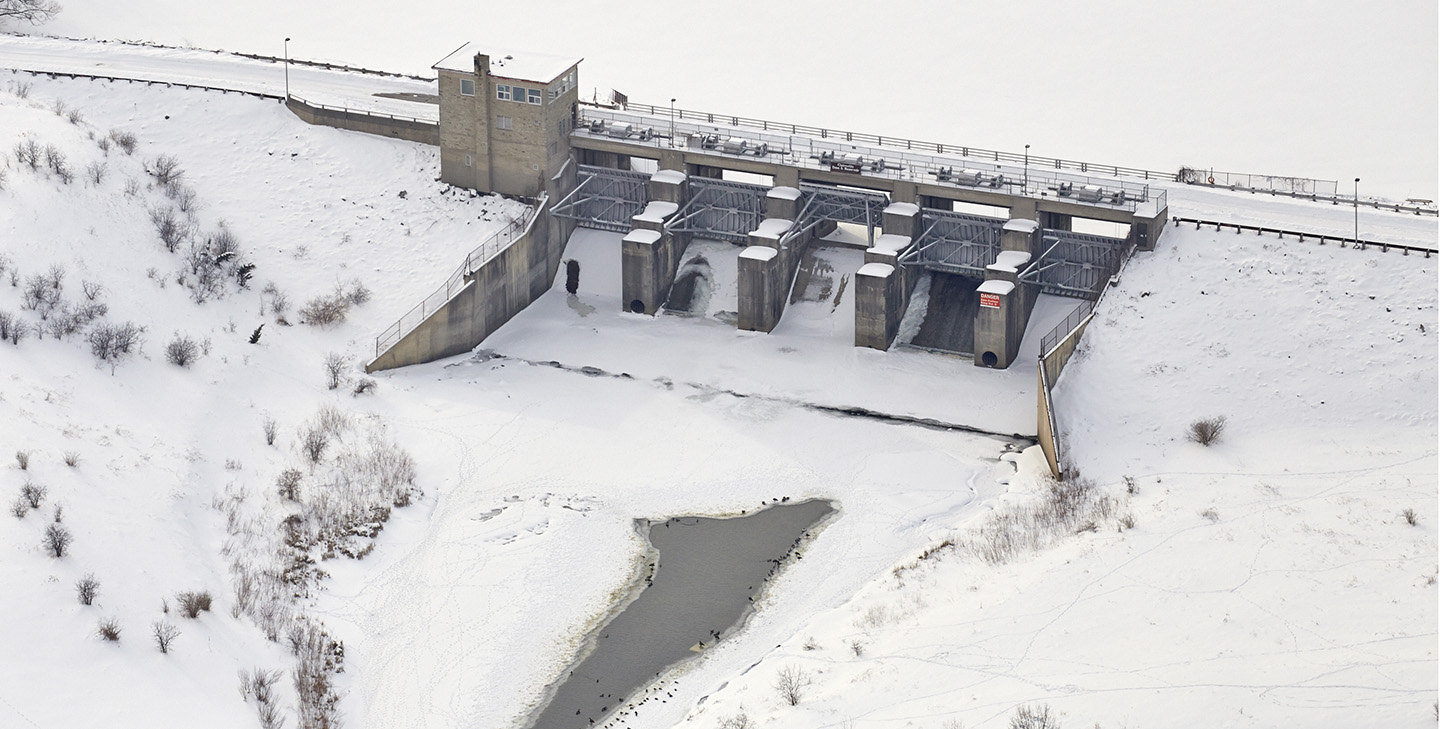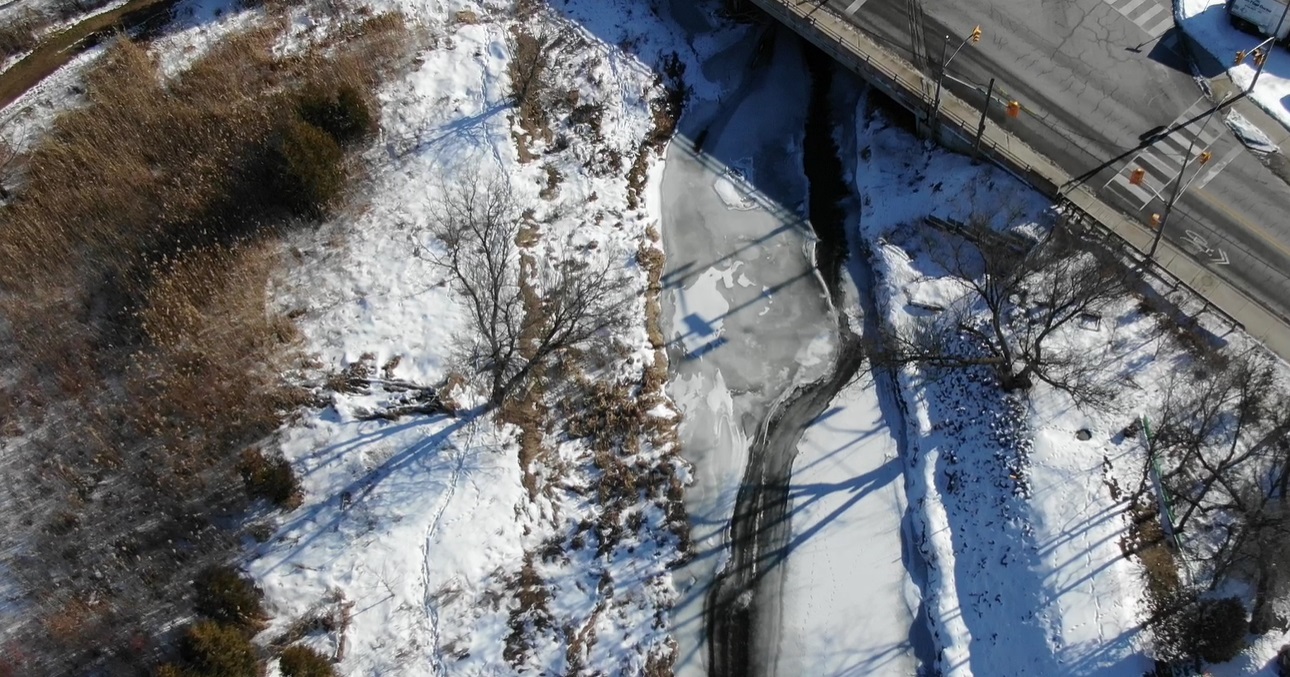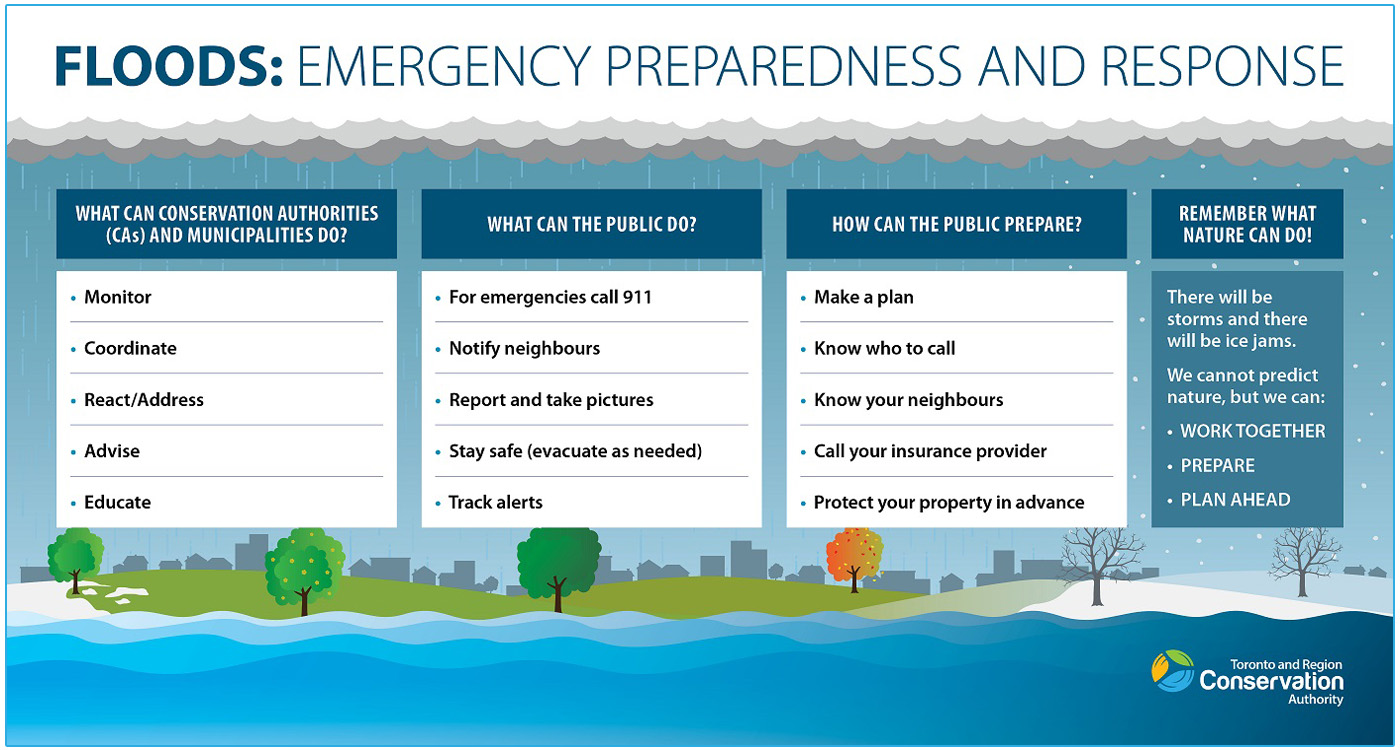Be safe this winter and remember the following tips:
- Ice is never 100% safe. Conditions are not being monitored and ice may be unsafe.
- Keep family and pets away from all bodies of water.
- Stay away from frozen reservoirs and ice around dams and channels and avoid all recreational activities in or around water, unless at an officially designated municipal facility fit for that purpose.
- Obey any safety signage that has been posted.
- If an ice jam is posing an immediate risk to life and property, call 911.
TRCA also reminds residents about safety around dams. Dam operators often lower water levels in reservoirs during winter and spring. Beware of thin ice that may develop due to dam operations. Learn more about dam safety.
INFORMATION ON ICE JAMS
READ TRCA’S ICE JAMS FACTSHEET
How do Conservation Authorities monitor ice jams?
In winter, Toronto and Region Conservation Authority (TRCA) operates a River Ice Monitoring Program. Staff monitor river ice conditions, assess the potential risk for ice jams, and provide River Ice Outlook forecasts to local municipal staff.
River Ice Outlooks are based on field observations of some known locations prone to ice jams. The program also includes advanced tools for monitoring in the field, such as Geographic Information System (GIS) mapping services and drone footage.

Historical ice jams in TRCA’s jurisdiction
Most ice jams cause nuisance flooding within TRCA’s jurisdiction. It is uncommon for ice jams to cause serious impacts to people and property — but it has occurred in the past.
There are 34 locations in our jurisdiction that have had historical incidents of ice jam flooding, of which 12 would be considered at a higher risk of jamming (see map below). These 12 locations are priority areas because there may be multiple years where ice jams have formed.
TRCA’s River Ice Monitoring Program inspects these locations regularly during winter months to provide early warning if potential ice jam conditions are present.
Select image below to view full-sized map.
Does flood infrastructure, such as dams and dikes, help to protect against ice jams?
TRCA’s flood infrastructure was not specifically designed to protect against ice jam flooding. Designing infrastructure to protect against ice jams is extremely difficult to do, given the unpredictable formation and location of ice jams.

Are ice jams considered in flood plain maps?
No, ice jams are not specifically considered in Conservation Authority flood plain maps. Flood plain maps only consider water flow through a watercourse. Ice jams are unpredictable and can occur anywhere along a watercourse.
Flood plain maps define the flooding hazard limit for applying land-use and development policies and also serve as the foundation of emergency response and flood forecasting and warning information. They are not necessarily based on floods experienced in the past.
Flooding, in general, can occur outside of mapped flood plain areas due to other specific conditions and circumstances, such as local drainage issues.
Can ice jams be predicted?
No, ice jams cannot be predicted accurately. Many factors, such as weather, river channel characteristics, and water flow conditions contribute to ice jam formation. State-of-the-art river ice science does not predict when or where an ice jam will form.

Who is responsible for dealing with ice jams?
While Conservation Authorities operate River Ice Monitoring Programs and can provide advice to municipal staff of ice jam risk, it is recommended that municipalities also conduct their own monitoring in critical areas to support emergency preparedness and public works planning.
Ice jam monitoring should be completed in winters where significant river ice cover forms — especially at known locations of historical ice jams — to provide early warning.
Everyone has a role to play: Conservation Authorities, municipal staff, and emergency responders, as well as the public, can continue to coordinate, advise, and share information.
Select the image below to view a full-sized version.
Ice jam response

RECOMMENDED:
- Ice jam intervention should only be considered and executed if it will successfully resolve the risk and not create another risk elsewhere.
- Municipalities could consider hiring contractors to use heavy equipment such as excavators to mechanically remove ice from the river.
NOT RECOMMENDED:
- Ice jam prevention including river modifications such as channel straightening or ice control structures: Ice jams can still form behind crossings, etc.
- Pre-emptively breaking ice cover by blasting (using explosives): Blasting is not recommended on ice cover or already formed ice jams. Broken ice can increase the risk of jamming downstream as well as damage surrounding areas. Blasting of ice is only successfully carried out in rare circumstances and conditions.
Is ice jam flooding covered by insurance?
Overland flood insurance is not covered by most standard policies. Residents are encouraged to talk to their insurance representative to confirm their coverage and options. Learn more from the Insurance Bureau of Canada.
Remember:
- You can sign up for TRCA flood messages.
- TRCA’s Flood Monitoring Gauging website has real-time water levels in your local creeks.
- If an ice jam is affecting your property or if you see ice accumulation in your area, please report observations to a TRCA Flood Duty Officer by email at Flood.Message@trca.ca or leave a voicemail at 416-661-6514.
For Additional Safety Information:


